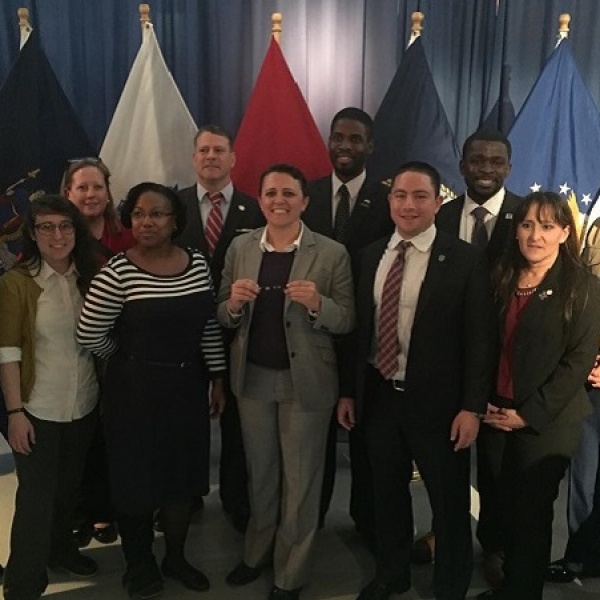HOW TO SUCCEED IN CIVIC TECH
- BEN BERKOWITZ
- February 5, 2016
- 6:59 pm
I am frequently asked what key factors have made SeeClickFix a successful platform for engaging residents and officials where others have failed. These ten key principles that have been translated into product and design decisions have led to a rapidly growing platform that constructively solves problems while making government officials look good in the process. We believe these principles can be applied to other civic tech efforts and leveraged for more inclusive, representative governance.
The following is a list of biases and opinions that have been baked into the SeeClickFix platform over the past 8 years. It is not meant to be exhaustive and it is evolving as we learn more about the community we serve.
1) Transparency
SeeClickFix was launched because we were concerned that the opaque 1–1 protocols (phone calls and email) for managing citizen communication was crippling participation and strengthening distrust in government. Where legally possible communication with government and communication with residents should be immediately available to the public. This is different than an open data or FOIA policy which makes records available after the government has processed them. Real-time transparency maximizes overall efficiency by deceasing the duplication of public communications and internal government work. Feedback Loops have a stronger impact when they are published to everyone.
2) Feedback loops at every step
When you report an issue on SeeClickFix you are immediately sent an email that your issue has been created. In that email you are told who from the government has received the email as well as how many neighbors were sent a message. When you check out your issue you can see how many times it has been viewed and all of the public responses and the number of people who are following along. When the status changes on the issue (Open>Acknowledged>Closed) or a comment is made you receive an update. With feedback loops nothing is lost in a black box. With transparent and immediate feedback loops everyone can see the responsiveness of government and word of mouth spreads to others who are encouraged to show-up and communicate constructively. Twitter, Medium, Facebook and every other successful communication platform leverage stats (likes, follows, reads, shares) to encourage more engagement. This is no different and your government product needs to be thinking about creating feedback loops at every step.
3) Resident experience must rival experience with popular consumer applications
There’s no reason why digital engagement with your government can’t feel like digital engagement with your friends and family. The experience needs to be well designed, meaning that a product person is listening and responding to the needs of the market. The experience should also be beautiful. Interacting with government should not feel like a lesser form of digital interaction designed by a time traveler from the late 90s. People fall in love with products that feel like they are designed for their needs and speak to their aesthetics. People can fall in love with their government for the same reasons.
4) Official experience must be as good as resident experience
If you are in local government and you want to engage residents, you need to do it in a way that benefits your co-workers, managers, and direct reports as well. Admittedly, this is not where SeeClickFix started but it’s where we live today. Incorporating gratitude into the platform for those that are creating the feedback loop can be done in a number of ways. SeeClickFix has a “thank you” button that residents use to praise local officials when a request is finished. As external communication increases, the product needs to make communication simple, easy and convenient. More residents engaging can translate to more work produced but it does not have to translate to more work done.
5) Understand that residents and officials are users of a bigger ecosystem than one government
Residents and officials live and work in multiple communities served by multiple public agencies. Software needs to acknowledge this and provide officials and residents opportunities to talk to each other beyond the traditional boundaries created by one-off systems. SeeClickFix users can report an issue in their county, their city, a neighboring town and to even smaller entities within towns like universities and housing authorities. Preaching regionalism feels like preaching to the choir these days. Still, many overlook software design and procurement as an opportunity to realize a regional vision.
6) Anonymity
Wherever possible residents and public employees should have the opportunity to participate in two way civic conversation anonymously. Studies have shown that communities that are previously disengaged are more likely to participate if they can do so anonymously. Put good community flagging features in place and terms of service that favor respectful communication and the concerns for trolling will be behind you. SeeClickFix is one of the largest digital platforms engaging people in government but trolling and disrespectful communication is minute, isolated and easily controlled. Anonymity is a baby quickly thrown out with the bath water on the web. In civic tech it’s a must.
7) Meet users on equal ground
A citizen needs to have equal say in the tools they use to communicate with government if communication is going to be a truly empowering to residents. This means the software that you are using for internal communication needs standardized API’s for other software applications to connect. It’s also important that residents are treated as equals. If a request is not resolved, the resident should be given the same opportunity to reopen the issue that a government has to close it out. I think this can apply in others areas of civic tech but maybe this is esoteric to request management and open 311. This is how trust is built in both directions.
8) Features should empower citizens to be more helpful than they previously thought was possible
At SeeClickFix we have enabled anyone to receive alerts, claim responsibility, and help out even when they are not ultimately responsible. As a result neighbors have helped out other neighbors in snow storms, cleaned up parks, helped to spread important civic information and offer suggestions for improving traffic safety and general quality of life. If your engagement strategy is working well residents will feel like they are helping and officials will feel like they are being helped.
9) Be portable
City Hall does it’s best engagement when it shows up at community meetings outside of the doors of City Hall. Your digital product should take the same approach. SeeClickFix achieved early growth in the community through it’s widget which can be embedded on a local news site, a community group blog as well as the City’s website.
10) Iterate
At SeeClickFix we persistently take advantage of the ability to push updates to our government partners and resident users continuously. We built dynamic mobile apps where service requests, buttons and other local customizations are dynamic and can be updated remotely without resubmitting to app stores. The days of legacy software installed on premise are gone. Your government software like your government has the ability to respond iteratively to the needs of its community.
In the spirit of #10 I will continue to iterate on this list as we learn more. These values are what make SeeClickFix so powerful. Without them the platform would be a shell of itself, not have created meaningful change and likely failed. As one of our spiritual leaders Micah Sifry once said, “Civic tech can’t be neutral.”
Ben Berkowitz is the CEO and founder of SeeClickFix. This piece was originally published on Medium.



